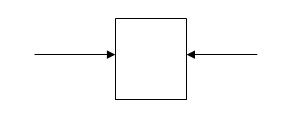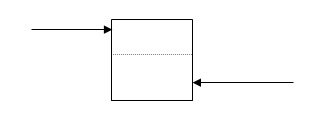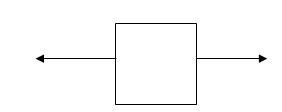GLOSSARY OF TECHNICAL TERMS
ADHESIVE RELATED
Accelerators
Additives that speed up reactions in adhesives.
Additive / Admixture
Polymer based material, usually liquid, which may be incorporated in cementitious adhesives and grouts to obtain greater adhesion, improved resilience (flexibility) or some degree of water resistance. Additives should be used strictly in accordance with the manufacturer’s instructions, and should not be added to an adhesive unless approved by the adhesive manufacturer.
Adhesion Failure
Adhesion failure occurs between surfaces such as between adhesive and substrate (AF-S) or between tile and adhesive (AF-T).
Adjustability
Maximum time interval during which the tile’s position in the adhesive layer can be adjusted without loss of adhesion strength.
Background
Vertical or horizontal surface that will be tiled onto.
Bed Thickness
The thickness of the adhesive beneath the tile once the tile has been bedded into the adhesive (Adhesive is applied using a notched trowel, which results in thicker ‘ribs’ of adhesive which spread out when the tiles are applied).
Bedding In
Applying tiles firmly onto/into the tile adhesive, ensuring good contact between the adhesive and the back of the tiles usually achieved by sliding the tile back and forth with occasional small rotational (twisting) movements.
Butt Joint
A technique in which tiles are laid directly adjacent to each other, with no space (grout joint) between the tiles. This method of tiling is NOT recommended.
Buttering
The spreading of adhesive onto the back of a tile just before the tile is placed. This is typical to the following :
- Tiles with irregular back profiles (in conjunction with adhesive applied to the background)
- Small or awkward application areas, where the adhesive cannot be applied onto the background
- Large format tiles (in conjunction with the adhesive applied to the background) to ensure full contact between the substrate, adhesive and tile (in this instance can also be referred to the double-buttering technique)
Cementitious Adhesive - Class C
Is a mixture of cement, sand and organic additives which is mixed with water or liquid admixture immediately before use.
Cohesive Failure
Cohesive failure occurs within layers such as within the adhesive layer (CF-A), or within the substrate (CF-S) or within the body of the tile (CF-T).
Compression
A force squeezing or compressing a body.

Compressive Stress
Is the measure of the compression force applied across a specific area.
Compressive Strength
Is the maximum compressive stress that a body can withstand before it fails.
Density
Is the weight per unit volume usually expressed in grams per cubic centimetre. Water for example has a density of 1 g/cu cm and sand has a density of about 1.6 g/cu cm. See also SG.
Dispersion Adhesive - Class D (Ready Mix)
Is a mixture of liquid organic binders, additives and fillers which is ready for use.
Efflorescence
Crystalline deposit that sometimes appears on the surface of grout joints or unglazed tiles as a whitish powder. It is caused by a reaction of moisture with impurities in the mortar. Sometimes excess water in the grout eg from cleaning can cause a similar effect to efflorescence.
Flash Off
Time required for solvents to evaporate from an adhesive layer before coverings can be applied onto the adhesive. The end of this period signifies the beginning of open time for such adhesives.
Friable
Crumbly or powdery (friable backgrounds are usually not suitable to receive tiling).
Grout
Proprietary material used to fill the joints between tiles after the adhesive has set.
Inorganic Compounds
In adhesive terminology these are normally inert fillers and cement.
Joint Sealant
Resilient material used to fill and seal joints, to prevent the passage of moisture and to allow horizontal and lateral movement at
the joint.
Laitance
Layer of weak non-durable material that contains cement and fines from aggregates and that has been brought to the surface of over-wet concrete or mortar by an upward movement of the water through the concrete or mortar.
Maturing Time
Interval between the time when a cementitious adhesive is mixed and the time it is ready for use.
Mortar
A workable paste made up of fine aggregate, cement and water.
Movement Joints
Gaps created between parts of a body (such as a concrete structure, or a tile layer) which are filled with a resilient (flexible) filler (such as silicone, polyurethane or polysulphide) so that changes in size of the parts of the body can be accommodated.
Open Time
Maximum interval after application during which tiles can be embedded in the adhesive without impairing the adhesive bond.
Organic Compounds
In adhesive terminology these are normally chemical compounds designed to impart specific properties such as water retention, adhesion, flexibility etc.
pH
Is the degree of acidity or alkalinity measured below (acidic) or above (alkaline) the neutral point of 7. Very low (acidic) and very high (alkaline) are associated with corrosive action.

Picture Frame Effect
Staining visible on all the edges of a tile, experienced after grouting with a grout different in colour to the tile. It is more pronounced in highly porous (absorbent) tiles, eg natural stone tiles.
Pot Life
Maximum interval during which the adhesive can be used after mixing before it begins to set.
Primer
Substance that is used to coat a surface, in order to make the surface more receptive to bonding by adhesives.
Reaction Resin Adhesive - Class R (Epoxy)
Is a two-pack mixture of synthetic resin, mineral fillers and organic additives in which hardening occurs by chemical reaction.
Render
Fine cement : aggregate mixture that is applied to wall backgrounds. Also known as plaster.
Retarders
Are additives that slow down reactions, such as the setting time of cements.
Rheology
Is the science of the flow of matter. In adhesive terminology it is normally observed as the ability of wet adhesive to support tile on a vertical surface.
Screed
A floor screed is a layer of mortar made with cement and sand which is cast in situ, usually to a specified minimum thickness, onto the structural concrete. The screed may be left as finished, or floated to produce a smooth surface on which to lay the specified flooring or finish.
Shear
A force applied across a body.

Shear Stress
Is the measure of the shear force applied across a specific area.
Shear Strength
Is the maximum shear stress that a body can withstand before it fails.
Shelf Life
Time of storage under stated conditions during which an adhesive may be expected to maintain its working properties.
Skinning
The formation of a pliant film on the surface of wet adhesive, which impedes the bedding of tiles onto the adhesive. This normally happens if the bedding of the tiles is done outside the adhesive open time.
Slip (Slump)
Downward movement of a tile applied to the wet adhesive on a vertical or inclined surface.
Slurry
A fairly thin mixture of a liquid (in this instance, usually a priming agent) and an insoluble solid material (in this instance, usually ordinary Portland cement).
Solids Content
The percentage remaining after all moisture has been driven off.
Specific Gravity (SG)
The weight of any substance compared with an equal volume of water, in other words how many times heavier (or lighter) than water it is. Sand would therefore have an SG of 1.6 (see DENSITY).
Tension
A force stretching or pulling a body apart.

Tensile Stress
Is the measure of the tension force applied across a specific area.
Tensile Strength
Is the maximum tensile stress that a body can withstand before it fails.
Topping
A layer of concrete that is poured over an existing concrete slab to improve the slab's surface or characteristics. The topping mix is composed of cement, sand and aggregate (admixtures may also be incorporated in the mix).
Viscosity
Refers to resistance of flow of matter. This is generally observed as the thickness of the mix when stirred.
The adhesive layers applied to both the back of tile and the substrate must still be wet (soft and pliable), so that the two layers can bind into each other when the tile is placed to form one, combined adhesive layer.





